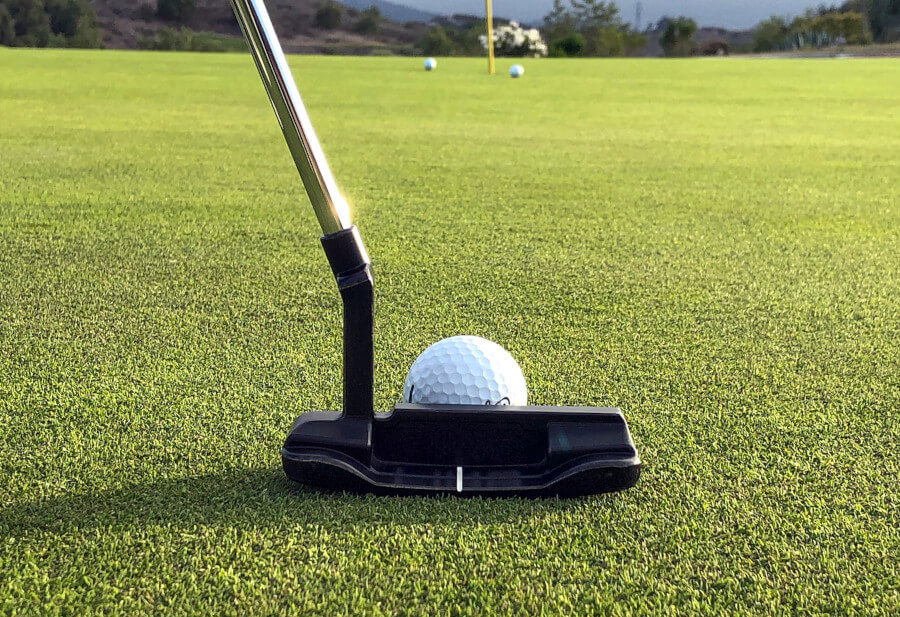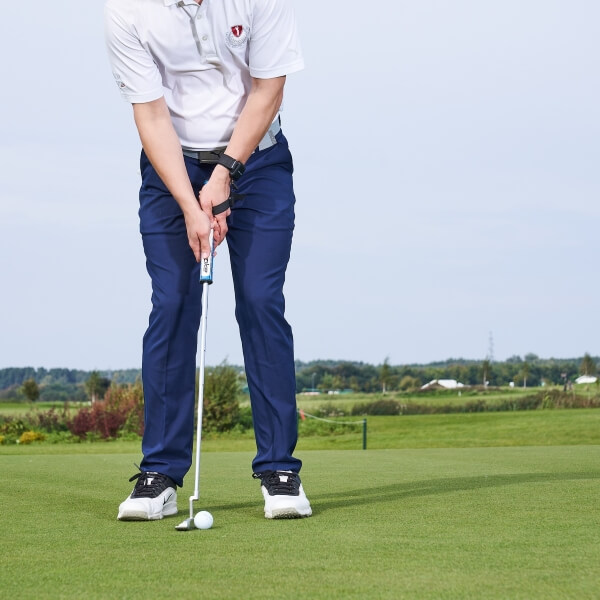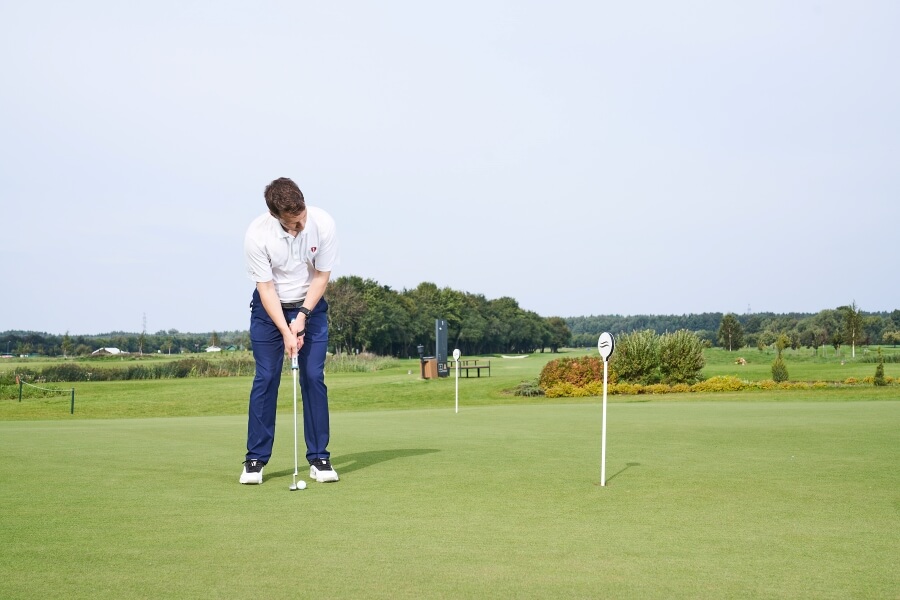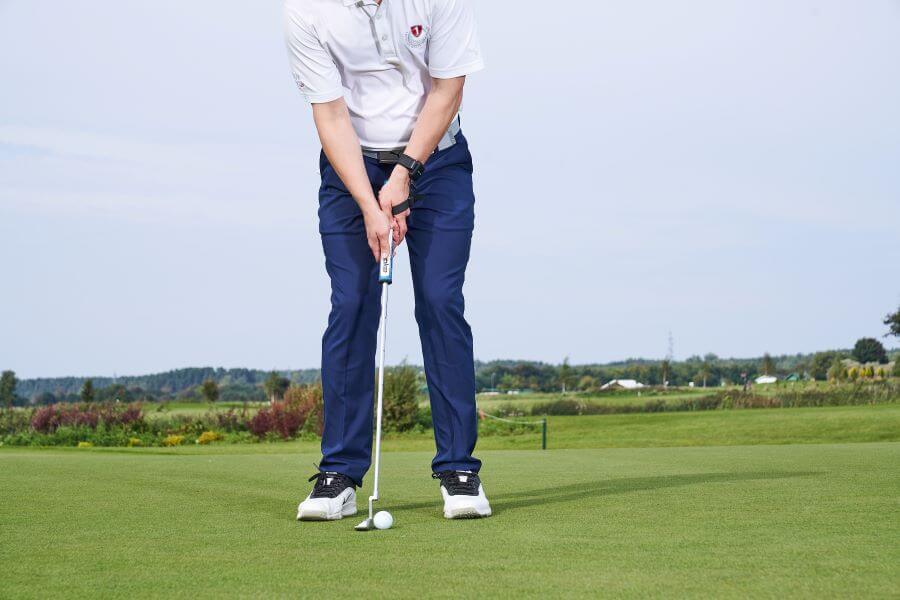How to Stop Shanking Wedges: 5 Fixes & Drills That Actually Work
Hitting an approach shot just before the green should feel like a chance to score. But for many golfers, that moment turns into frustration when a shanked wedge sends the ball shooting sideways. Instead of saving par, you’re left scrambling to avoid a double or triple bogey.
The reality is that shanking wedges isn’t random; it comes from a few repeatable mistakes in setup or swing mechanics.
The good news? Each one has a clear fix. In this guide, we’ll cover why shanks happen, the most effective corrections you can make, and drills that will help you build confidence with your wedges.
Having trust in your short game will not only save strokes but also help you lower your handicap over time.
How to Stop Shanking Wedges (Key Takeaways)
If you don’t have time to read the entire article on how to stop shanking wedges, here are some of the key points you can take:
- Check that you’re not standing too close to the ball, which makes it difficult to swing without hitting the hosel.
- Keep your weight centered on your feet (slightly favoring the lead side) so you don’t drift onto the toes and push the hosel into the ball.
- Too much wrist hinge or extension early in the swing often creates a shank—wear HackMotion to confirm your wrists stay stable.
- Use an obstacle (headcover, basket, water bottle) just outside the ball to train a neutral path and prevent over-the-top strikes.
- Maintaining posture through the swing helps keep the club on plane and prevents the arc from moving outward into the ball.
Contents
Why do I Shank My Wedges
Luckily, there are really only a few main causes of a shanked wedge shot. Regardless of why you shank the wedges, you’ll need to fix it.
If it helps to know the cause, look out for these three things:
- Improper Weight Distribution: When weight drifts toward the toes in transition, the club naturally pushes outward, and the hosel meets the ball first.
- Clubhead Moving Outside the Path: When the clubhead moves outside the intended swing path, it can cause heel or hosel contact.
- Poor Hand and Wrist Movement: Moving the hands and wrists too far to the inside on the takeaway or creating too much wrist hinge can cause the player to strike the ball with the hosel.
5 Effective Ways to Stop Shanking Your Wedges
The first thing you want to do when you start shanking wedges is to check your setup and your ball position to make sure that nothing is out of place.
Once you have that figured out, you can move through each one of these fixes to see if it helps you cure your shanked wedges.
These fixes work for both pitch and chip shots and with everything from a pitching wedge to a lob wedge..
Get the Weight Centered on Your Feet
When you set up, ensure the weight is centered on your feet. If it starts too close to the toes, you may move further on the toes, pushing the club out and hitting the wedge on the hosel.
Instead, center the weight, put a little more on the lead foot instead of the trail foot and then only allow for it to shift side to side not back to front.
Correct the Swing Path
There are a few different swing path issues that can cause you to shank. One of the easiest ways to fix this is to place a range bucket, a box, or even just another golf ball on the outside of the ball you are trying to hit.
As you swing through, the goal is to miss this obstacle.
You’ll have to keep the clubface square and ensure the club strikes the ball on the intended path and returns to the ball square.
Avoid Excessive Wrist Movement
When the wrists move too much with a wedge in the hand, the possibility of a shank comes into play. Mostly, what you see here is an issue with too much wrist hinge and extension in the lead wrist.
Instead of swinging the club back, it comes up and, therefore, off of the proper plane. In addition, the lower body is never engaged, and therefore, this movement is inconsistent.

Wear your HackMotion and keep the wrists firm and stable, avoiding unnecessary wrist action.
You’ll want to have a slight flexion in the lead wrist as you move through impact instead of too much extension.
Watch Your Distance to the Ball
Your distance to the golf ball can cause you to shank your shot. When you stand too close there is not enough room to swing and therefore you hit the hosel of the club.
When you stand too close, the club can move outside the intended path and create the shank. Play around with a few different positions and see what feels the most comfortable.
Maintain Posture Through the Swing
Losing posture mid-swing is one of the most common causes of shanks. When you stand up or drift out of your setup angles, the swing arc pushes outward, and the hosel meets the ball.
Focus on keeping your spine angle steady and your chest rotating through impact instead of lifting up.
If posture breaks down, you’ll often see the wrists compensate with extra hinge or flip. Wearing HackMotion during practice can highlight this, stable wrist patterns almost always pair with solid posture.
Drills to Help You Stop Shanking Wedges
Here are a few of the best drills you can use to help you stop shanking wedges and hit better wedge shots. These can also help if you are shanking your irons.
Inside Takeaway Drill
If you roll the club too far inside early, sequencing breaks down and the face tends to open. Use this to train a neutral, on-plane start and verify it with your HackMotion wrist data.
HackMotion Inside Takeaway Drill
If your takeaway tends to get too far inside early, this drill is for you.
HackMotion Inside Takeaway Drill – Step by Step:
- Set up: Address the ball with HackMotion calibrated and Live Mode on.
- Start the takeaway: Move the club back slowly, keeping the clubhead outside your hands for the first 12–18 inches.
- Checkpoint (P2): Pause when the shaft is parallel to the ground. Confirm the lead wrist hasn’t excessively extended/hinged—keep it stable in the green zone.
- Use a guide (optional): Lay an alignment stick along your toe line to discourage rolling inside.
- Blend to full swings: Make 5–8 smooth half swings, then progress to full swings while monitoring the same P2 checkpoint on HackMotion.
Swing Plane Water Bottle Drill
If your swing plane gets too steep or too flat, the hosel comes into play. This drill gives you a simple outside/inside visual so you can deliver the club on a neutral arc.
- Video timestamp – 0:30
Swing Plane Water Bottle Drill – Step by Step:
- Set up bottles: Place two water bottles (or range baskets) on the ground—one just outside the ball and one just inside, creating a gate-like swing corridor.
- Takeaway: Swing the club back, missing the inside bottle.
- Downswing: Swing through the ball without clipping the outside bottle.
- Checkpoint: Use HackMotion to confirm that your lead wrist remains stable (flat to slightly flexed) at impact rather than flipping into extension.
- Reps: Start slow, then work into half swings, finishing with controlled full swings.
Headcover Obstacle Drill
If your path gets too steep and across, the club tends to strike the hosel. Using a headcover just outside the ball forces a more neutral, shallow path.
Headcover Obstacle Drill – Step by Step:
- Place the obstacle: Put a headcover or towel just outside and slightly behind the ball.
- Deliver from neutral: Take slow practice swings, missing the headcover on both the takeaway and downswing.
- Wrist checkpoint: On HackMotion, look for less lead-wrist extension at the top and through impact—flatter wrists produce a square face.
- Reps: Alternate 10 rehearsals, 10 half swings, and 10 full swings.
Side note: If your issue is the opposite (swinging too far from the inside), flip the headcover to the inside of the ball instead. This forces a more neutral path in the same way.
Final Thoughts
Shanking wedges can feel like the end of a round, but it doesn’t have to be. Most hosel strikes trace back to simple issues, setup distance, weight distribution, posture, path, or wrist angles.
The key is identifying which one is breaking down in your swing. HackMotion makes this easier by showing whether your wrists are adding too much extension or staying stable through impact.
Combine that feedback with these drills, and you’ll have a go-to system to stop shanks fast whenever they creep into your game.














